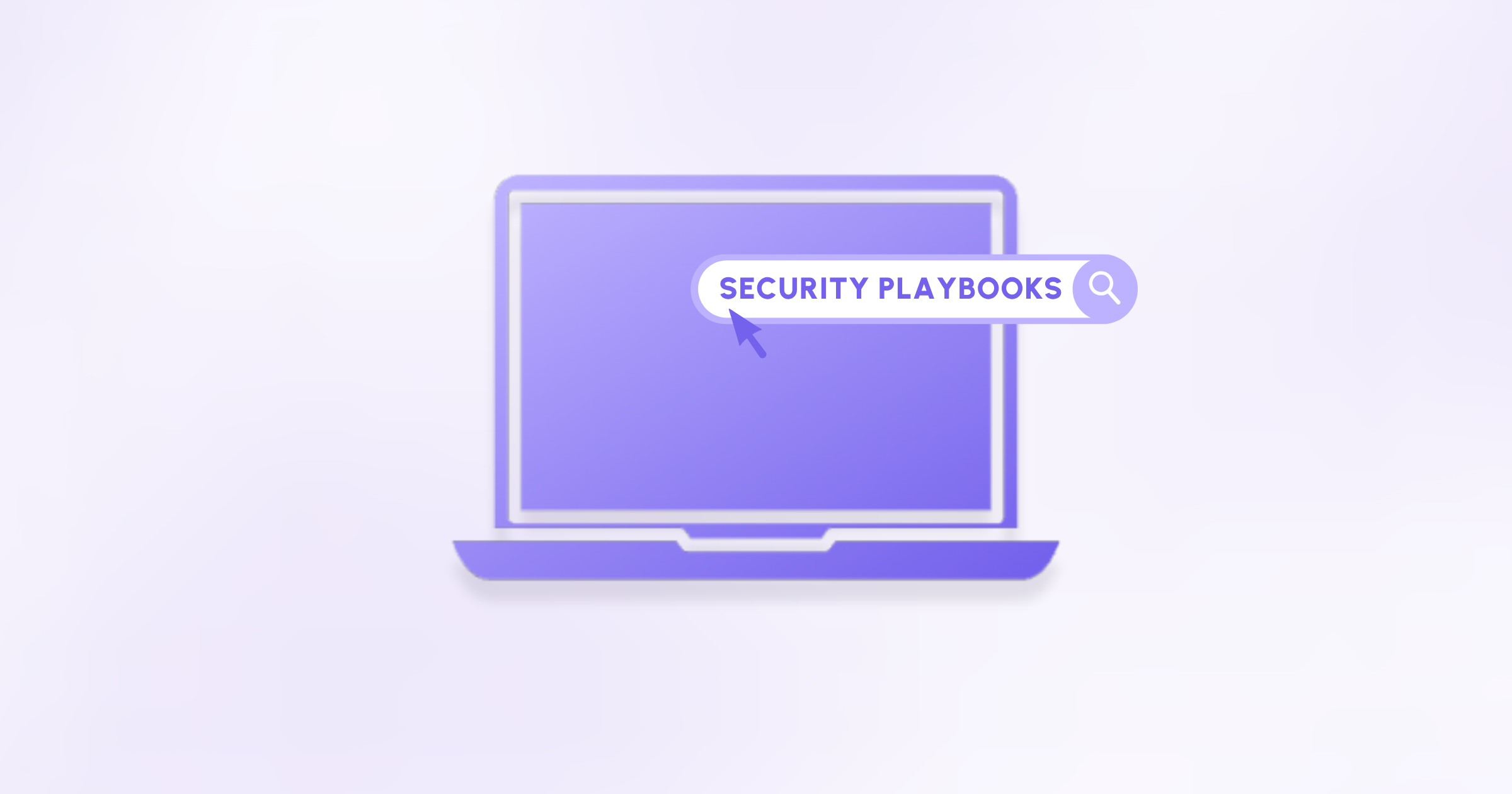From Panic to Poise: Crafting Effective Response Procedures for Any Incident
Discover how well-defined processes, documented as playbooks and supported by automation, enable teams to handle security incidents with speed, efficiency, and confidence.

The risk of new cybersecurity and privacy incidents is ever present. With threats like ransomware, novel malware, and unauthorised access becoming increasingly common (and often leading to damaging data breaches) organisations must be prepared not only to detect these threats, but to respond to them efficiently and effectively.
Moreover, the shortage of experienced cybersecurity personnel, estimated at over 4 million globally, only amplifies the need for well-defined response procedures that can guide even less experienced team members through high-pressure situations.
In this blog post, we'll explore the importance of crafting incident response processes supported by automation and how they can help organisations navigate through crises with confidence.
Understanding cybersecurity and privacy incidents
Cybersecurity and privacy incidents encompass a wide range of events that compromise the confidentiality, integrity, or availability of digital information and systems. These incidents can take various forms: from sophisticated cyberattacks orchestrated by malicious actors and meticulously crafted malware based on zero-day vulnerabilities, to inadvertent data exposures resulting from social engineering or human error. What’s more, modern malware are capable of remaining undetected for months, exfiltrating large volumes of data or moving laterally within compromised environments.
The consequences of such incidents can be severe, including financial losses, reputational damage, regulatory penalties, and legal liabilities. According to the IBM Cost of a Data Breach 2024 report, the average cost of a data breach globally has reached $4.88 million, with organisations taking an average of 277 days to identify and contain a breach. Small and medium-sized enterprises (SMEs) are particularly vulnerable. One in four (27%) small businesses say they are one disaster or threat away from shutting down. And a survey of 1,200 SMBs finds 75% say they would be able to survive only 3 to 7 days from a ransomware attack.
By understanding the nature and potential impact of security incidents, organisations can establish robust processes for detection, containment, recovery, and regulatory reporting to better prepare themselves to respond effectively to these threats.
Panic is a bad advisor in cybersecurity
When confronted with a cybersecurity incident, it's natural for stress levels to spike. However, succumbing to panic can negatively impact the organisation's ability to respond effectively. It often leads to confusion, paralysis, and reactive decisions, all of which can aggravate the incident’s impact and prolong resolution time.
In enterprise environments, where incidents can affect thousands of users and critical business operations, the cost of panic-driven decisions multiplies exponentially. Organisations must aim to build a culture of preparedness, where response processes are predefined, tested, and automated wherever possible. This enables even junior analysts to follow structured, guided procedures, helping teams stay confident and respond quickly and effectively.
Acknowledging how panic hurts incident response can drive organisations to implement proactive measures and strong cyber-defense processes, regardless of their size.
The art of crafting solid, executable response processes
Crafting response processes that fit your organisation's specific cybersecurity and privacy needs is complex but essential for reducing incident impact.
Start with thorough risk assessments that identify critical assets and categorise incidents by risk probability, severity, and potential impact. This approach aligns with established frameworks such as NIST's Cybersecurity Framework and the SANS Incident Response methodology.
Next, clearly define team roles, responsibilities, and escalation paths. Identify and integrate legal and regulatory requirements into your response planning. Use this information to develop comprehensive response plans that outline specific activities based on defined roles and procedures.
To create effective incident response procedures, several essential components are needed that collectively form a cohesive framework for incident management. These include:
- Incident detection to identify threats in real-time,
- Communication protocols for timely and accurate reporting to stakeholders and regulators,
- Containment tools and strategies to mitigate the spread of incidents,
- Recovery plans to restore systems and data with minimal business disruption,
- Forensics and post-incident analysis tools for evidence preservation and lessons learned.
Tools that enable cross-functional collaboration, support timely information sharing, and allow coordinated efforts are also key for a unified and cohesive response.
Bringing all these tools and processes together into a coherent, easy-to-implement plan is challenging. This is where cybersecurity playbooks prove invaluable. They provide clear, guided ways to model and execute incident detection and response actions.
Playbooks come in different forms based on their purpose: Detection, Remediation, Mitigation, Engagement, Notification, and even Attack Simulation playbooks. They also vary in level of detail, from low-level playbooks that automate the activation of firewall rules or the retrieval observables from SIEM tools, to high-level playbooks that define the strategy and general steps to follow during an incident.
By investing in the development of robust response procedures and maintaining a well-curated library of playbooks, organisations can strengthen both their responsiveness and resilience.
Maintaining poise during a security incident
Staying calm during an incident is critical for timely, informed decision-making and successful execution. A few key practices support this: staying informed as the situation evolves, relying on predefined response processes, and leveraging automation alongside human expertise.
This is where operationalised playbooks that all team members can access and understand, from response teams to management, provide real-time value. Teams must be able to quickly identify and access the right playbook for the scenario at hand. As threats and techniques evolve, organisations need a scalable, diverse playbook collection that covers a range of scenarios, from phishing and lateral movement to data exfiltration and regulatory notification.
Quick retrieval and execution of the appropriate playbook is essential. This calls for a structured platform or knowledge base where playbooks can be stored, categorised, and executed (ideally integrated with incident tooling to reduce manual effort), and even shared across teams or external partners when necessary.
Ultimately, automation supported by accessible and operationalised playbooks fosters a culture of readiness and resilience. It enables security teams to stay calm, focused, and aligned, ready to navigate even high-stress incidents with confidence and composure.
Conclusion
Being able to transition from panic to poise isn’t just desirable — it’s essential. Automation plays a pivotal role in enabling faster, more structured incident response. By investing in well-designed response procedures and playbooks, organisations can enhance their overall security posture, reduce the impact of incidents, safeguard assets, and maintain the trust of customers, partners, and regulators.
Tools like playbooks not only streamline response but also help fulfil regulatory obligations, especially in areas like breach notification and incident reporting. With the right frameworks, planning, and tooling in place, organisations can navigate through crises with confidence, ensuring a swift and effective response to any incident.




